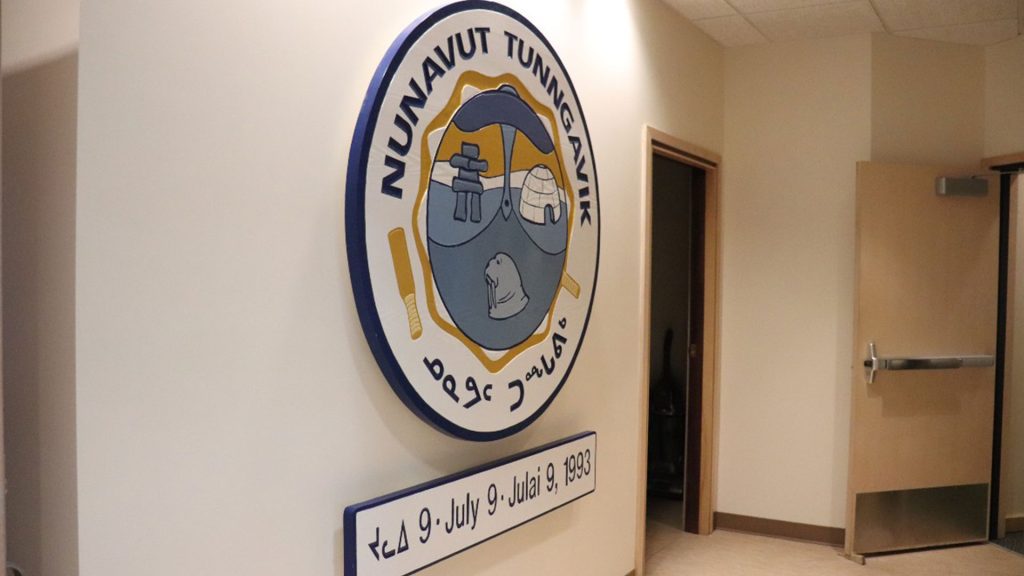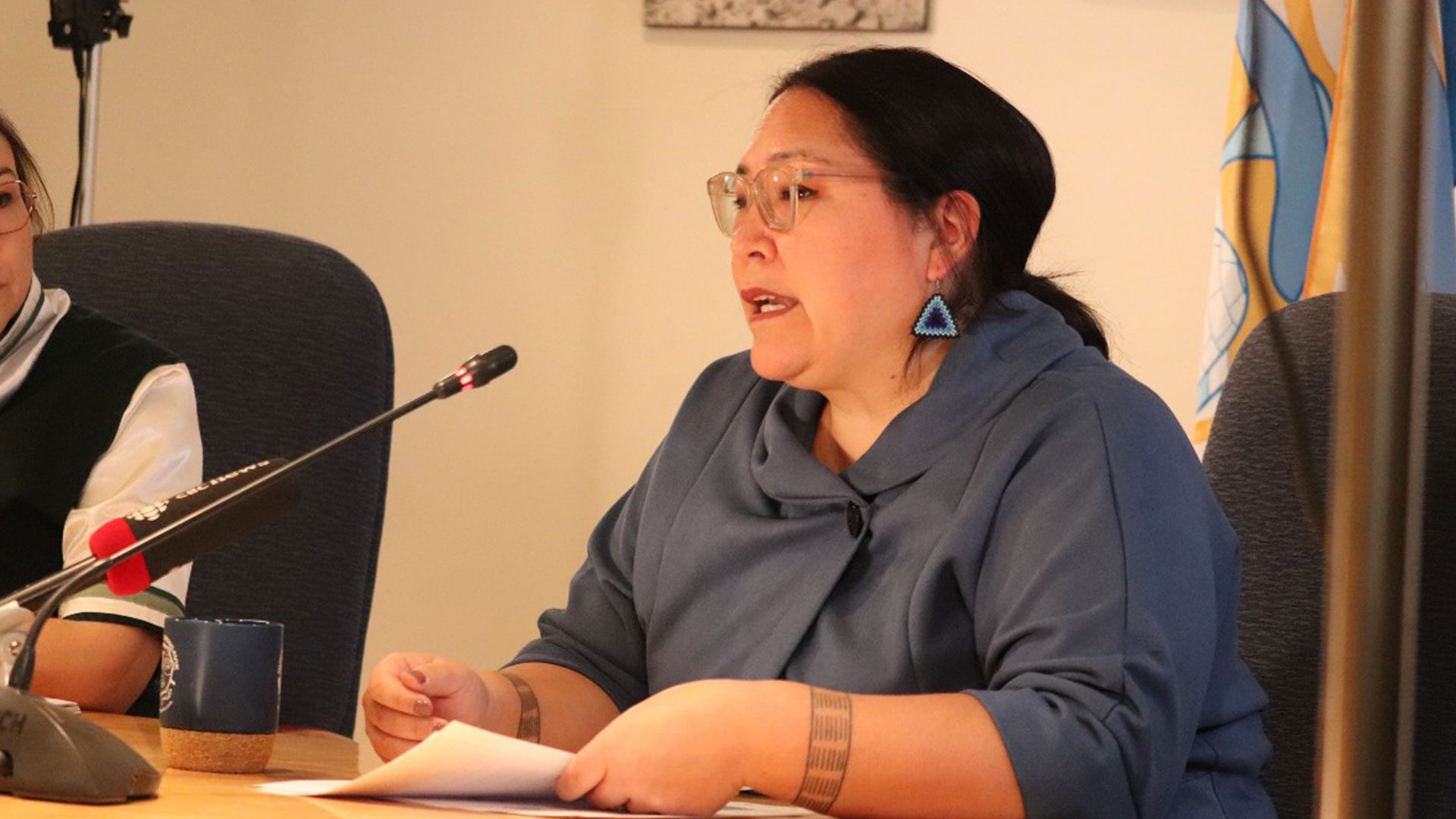
Nunavut Tunngavik Inc. is going into arbitration with the federal and Nunavut governments over stagnating Inuit employment. Photo: Trevor Wright/APTN
A federal arbitrator is giving Canada, Nunavut and Nunavut Tunngavik Inc., two months to work out a deal over government employment levels for Inuit in the territory.
While Inuit represent 85 per cent of Nunavummiut, the president of NTI said it’s unacceptable that Inuit employment in the public sector remains only at 50 per cent broadly, with the percentage decreasing at higher levels of government.
“There was a great expectation that Inuit would be employed at a representative level at all levels of government,” said Aluki Kotierk.
In 2006, NTI launched a lawsuit against Canada and Nunavut over Article 23 of the Nunavut Land Claims Agreement which covers public sector employment and contracting in the territory and was written to encourage governments to hire Inuit for work.
Nunavut Tunngavik Inc., or NTI as it’s known, said neither Canada nor the territorial government are living up to Article 23.
The arbitrator, former Alberta justice Constance Hunt, said Canada and Nunavut must draft new Inuit Employment Plans (IEPs) which will clearly reflect whether or not a representative workforce is being achieved.
“Current IEPs often make it very difficult to tell whether and where there has been progress toward achieving a representative level,” wrote Hunt in his decision.
Hunt also ruled that, among other issues, Canada and Nunavut failed to explain how each department planned to increase and maintain Inuit employment, reporting “goals and actions for achieving fully representative Inuit employment at all levels and occupational grouping using accepted national occupational codes.”
If the federal and territorial governments had a representative workforce said Kotierk, it would mean more services being made available in Inuktitut or other Inuit dialects, more money staying in Nunavut’s 25 communities and increased food security as hunters and fishers would have more resources to purchase hunting equipment, boats and other equipment necessary to obtain country food.
“It would also add to the self-value of people contributing to society. As a society who used to live out on the land, we knew how important every single person is, whatever role they play. Now that we live in communities, where far too many Inuit are unemployed, the feeling of being worthless or not having as much value, becomes a great burden in our communities and it eats away at our self-esteem,” said Kotierk.
Canada is being represented by Crown-Indigenous Relations and Northern Affairs.
A First

Right now there’s a 60-day period where NTI and the two governments would be sitting down and discussing what kind of remedies would be required.
This part of the arbitration will be confidential, according to NTI legal council.
“We are in a very particular stage in the arbitration process, this is a new process that was negotiated to amend the Nunavut Agreement back in 2015 when we had an out of court settlement,” explained Marie Belleau, managing legal counsel for NTI.
This is the first time they are utilizing the arbitration process. NTI has put in a proposal to review a range of remedies, which may include monetary damages.
“We are obviously seeking measures which can improve the government’s efforts in achieving adequate Inuit Employment Plans,” added Belleau.
If these negotiations fall through, the two sides would be going back to the arbitration process.
The ideal outcome from NTI’s perspective out of this arbitration would be to have obligations outlined in Article 23 be fulfilled.
“In 1993 when we signed the agreement we had expectations that our agreement would actually be implemented,” said Kotierk.
In 2015, the dispute was settled between NTI, Canada and Nunavut resulting in a commitment for detailed and clear Inuit Employment Plans.
“There was a recommitment to the obligation and now we find ourselves at a place where the obligations are still not being met,” said Belleau. “The biggest positive outcome of this would be (that) the obligations are actually fulfilled so we don’t find ourselves years from now, again, how we could impress upon the governments how important it is to live up to its obligations.”
Belleau added Article 23 is very clear as to how Inuit would be hired and trained within the government in the territory.
“It’s laid out very well, there’s supposed to be a labour force analysis, there’s supposed to be pre-employment training, there’s supposed to be Inuit Employment Plans laid out and each individual level. The governments are supposed to take certain steps to achieve that goal.”
“We’re seeing the results that we are seeing, we have stagnated at 50 per cent for all of this time.”
Read More:
The Nunavut Land Claim Agreement, signed on May 25, 1993, addresses a wide range of political and environmental rights, and also addresses a broad area of concerns for Nunavut Inuit from wildlife management, harvesting rights, mineral rights, conservation as well as numerous other areas, such as public sector employment.
According to the federal Nunavut Inuit Labour Force Analysis report released in August 2018, while there are community variations, “at the territorial level, the number of unemployed Inuit with at least a high school diploma is similar to the number of government vacancies.”
The same report found more pre-employment training will be necessary to increase the pool of Inuit candidates, particularly in science and health-related jobs.
Nunavut’s Human Resources department said that Inuit representation in the territorial government continued to hover at 50 per cent from 2016 to 2019, with non-Inuit being hired at approximately the same rate as Inuit.
In positions which usually require a university degree, Inuit representation goes down to 25 per cent.
Crown and Indigenous Relations and Northern Affairs said it’s reviewing the arbitrator’s ruling.
“Increasing Inuit employment remains a priority for our government and we understand its socio-economic impacts, as well as its important role in addressing Inuit self-determination,” said a spokesperson at CIRNAC.









